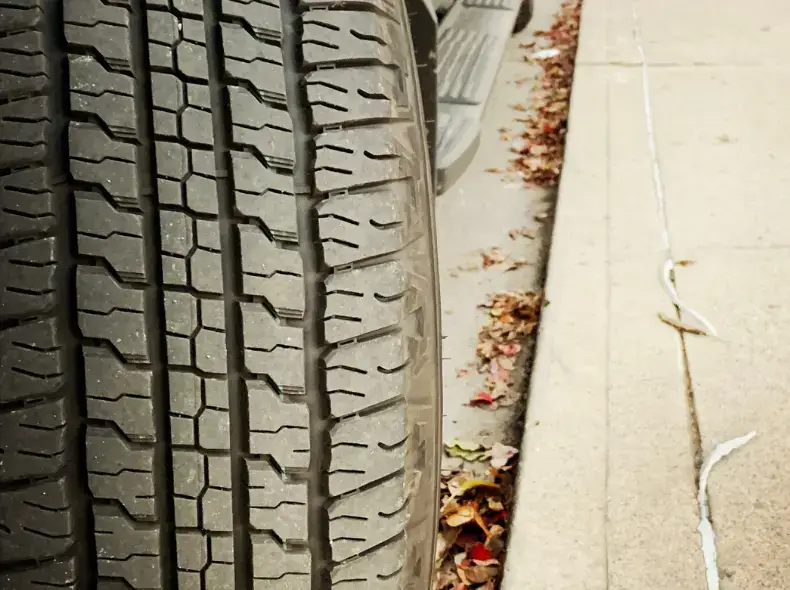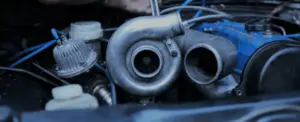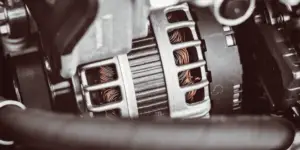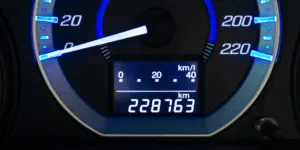So you’ve hit a curb and are worried about the damage you may have done to your tire. This article will explore the different types of damage that could be done and how to check to ensure your tire is still safe to drive on.
Is It Bad To Hit Your Tires On The Curb?
Firstly don’t worry too much if you hit a curb. This happens all the time, and you’re not alone. It normally happens during parking but also when you drive over a curb to park the car on a drive that hasn’t got a dropped curb.
Either way will look at the consequences for your tires.
Tire Checks To Do If You Hit a Curb
Sidewall Scuffing
Have you scuffed the sidewall? This normally happens when a driver parks too close to the side of the road and the sidewall rubs against the curb’s concrete.
How bad is the scuffing? Is it deep or simply a graze? Are there any cuts in the sidewall? How hard did the sidewall come into contact with the curb?
The sidewall is an often overlooked part of the tire. It isn’t reinforced like the tread area and relies solely on air pressure to keep its shape.
Minor sidewall scuffing is usually okay, but you can never be sure without removing the tire from the rim and looking inside. Sometimes what looks like minor scuffing can be worse under the surface.
It is always best to get your tire inspected at a tire shop to be sure.
Yes, it may cost $15 or so, but far better than driving around on a tire that may have a badly damaged sidewall.

Bubbles or Bulges
Bulges and bubbles on the sidewall are bad.
Bubbles usually happen on the sidewall due to a big impact, like driving over a pothole where the air pressure is briefly compacted and pushed out at a weak point in the unreinforced sidewall.
It is unusual for rubbing the sidewall against a curb to cause a bulge unless the tire was weakened before.
If you hit a curb straight on with the tread section of a tire, this can compress the air the same way a pothole would and cause the bubble.
It shows rubber weakness in the bulge area and cannot be repaired.
There is no way of repairing a tire bulge at home or a tire shop. You’ll need to buy a new tire.
Tire Bead Leak
The tire bead is the area of your tire that sits under the lip of your rim or steel wheel. When your tire is inflated, the bead is forced up against the lip and seals the tire against the tire.
Have you ever heard a loud pop when you have had a tire changed at the tire shop? That’s the noise of the tire being slightly overinflated to force the bead up tight against the rim.
Hitting a tire against the curb can damage the bead and rim lip.
The bead is made of rubber and copper coated steel wires thread to strengthen it. A wack by a curb can dent a section of the bead and cause a slow leak.
You’ll normally see the rim has also been dented in this area.
Other Care Parts That Hitting A Curb Can Damage
Damage to the Wheel or Rim
Quite often, wheel or rim and tire damage go hand in hand. If you notice damage to one, there’s a good chance the other is damaged.
Firstly the only wheel damage you will likely see if you have scuffed a tire against a curb is cosmetic scratch marks.
It won’t be easy to bend a rim when you have only scuffed a tire. Steel or aluminum is much stronger the rubber.

Hitting a curb full-on is more likely to cause a bubble on the sidewall as these impacts are more forceful. The energy that is created by hitting a curb can bend a rim.
It’s rare, as bent rims normally occur at higher speeds when hitting potholes.
Steering and Wheel Alignment Problems
Even if you see no rim damage, the impact may have altered your wheel alignment. You know if this happens when you drive and feel your car wandering or pulling to one side.
Wheel alignment is often confused with tire balancing. A wheel alignment alters the angle of your wheel on the axle to ensure that your car is stable and balanced on the road.
Any small knock can affect these delicate adjustments and how your car feels.
Suspension Damage
It’s rare for your suspension parts to be damaged by hitting a curb at a slow speed. The shocks, springs, or struts will indeed take a hit when you drive into a curb but not enough to cause them to fail.
Now, if they were close to failing anyway and you had noticed signs of clunking noises going over a bump or pothole, then hitting a curb will exacerbate this and make the suspension worse.
Can Hitting a Curb Total A Car?
Hitting a curb at a slow speed will not total your car.
If you hit a curb at high speed full on with both front wheels, you could misalign the chassis and cause damage to the underside of your car, including the suspension and the oil pan.
You might also rupture the brake and fuel lines.
The major factor here is your car’s age and whether an insurance assessor deems your car salvageable. A newer luxury car is more likely to be worth repairing than an older car of less value.
Why Happens To Your Tire When You Hit A Curb?
It is bad for your tires to hit a curb. Your tire is designed to spin freely along the road; the only force it should encounter is friction from the road surface.
If you hit it against the curb, it is subjected to greater energy than it is designed to withstand.
The air in the tire will be compressed, which could result in a bubble or bulge in the less reinforced sidewalls. It may also damage the tire bead and result in a slow air leak.
Conclusion
If you have hit your tire against the curb, it may need to be fixed. If you have a tire bead leak around the rim, this can often be repaired.
Any damage, however minor, to the sidewall should be investigated further at a tire shop.
When damaged, tire sidewalls often exhibit worse damage inside the tire, which can only be checked if you take the tire off the rim.
Tire sidewalls are more prone to blowout than damage to tread, and you should not take any chances with them.













